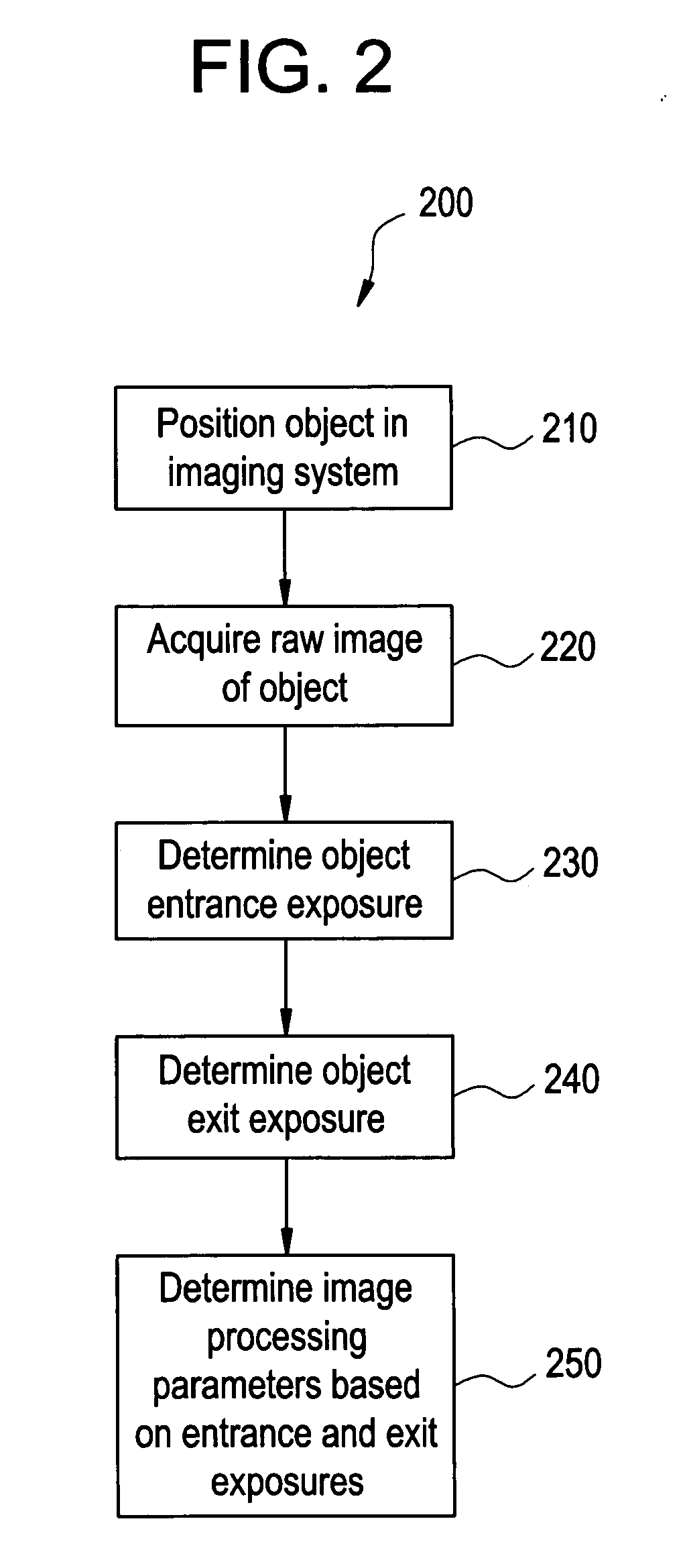Adaptive image processing and display for digital and computed radiography images
a computed radiography and image technology, applied in the field of image processing and display of digital images, can solve the problems of compromising the health and safety of patients, difficult for doctors, technicians, or other medical providers to read and interpret, and inconsistent quality of diagnostic images
- Summary
- Abstract
- Description
- Claims
- Application Information
AI Technical Summary
Problems solved by technology
Method used
Image
Examples
Embodiment Construction
[0023]FIG. 1 illustrates an imaging system 100 for adaptive image processing and / or display, according to at least one embodiment of the presently described technology. The imaging system 100 includes an object 110, an energy source 120, and an energy sensor 130. The imaging system 100 may also include an image processor 140 (not shown) and an image display 150 (not shown). The sensor or detector 130 may include a plurality of detector elements (not shown).
[0024] The components of the imaging system 100 may be implemented in software, hardware, and / or firmware, for example. The components of the imaging system 100 may be implanted separately and / or integrated in various forms, for example.
[0025] The object 110, such as a patient or selected area or anatomy of the patient, may be positioned or located in the imaging system 100. More particularly, the object 110 may be positioned or located between the energy source 120 and the energy sensor 130. The energy source 120 produces energ...
PUM
 Login to View More
Login to View More Abstract
Description
Claims
Application Information
 Login to View More
Login to View More - R&D
- Intellectual Property
- Life Sciences
- Materials
- Tech Scout
- Unparalleled Data Quality
- Higher Quality Content
- 60% Fewer Hallucinations
Browse by: Latest US Patents, China's latest patents, Technical Efficacy Thesaurus, Application Domain, Technology Topic, Popular Technical Reports.
© 2025 PatSnap. All rights reserved.Legal|Privacy policy|Modern Slavery Act Transparency Statement|Sitemap|About US| Contact US: help@patsnap.com



